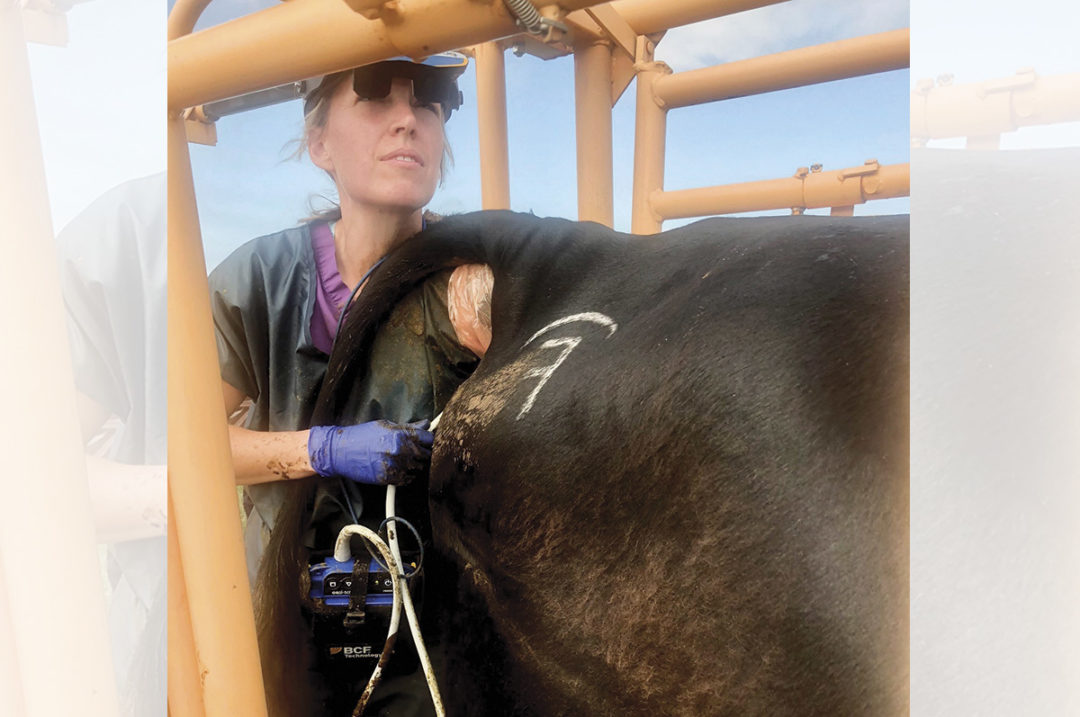This May Mental Health Month, we’re hyper-focused on a record-setting rural veterinary shortage, high levels of burnout and a mental health crisis that continues to impact the veterinary industry. A sober fact: The suicide rate of veterinarians is four times that of the general population. Together, let’s explore how the development of a stronger relationship with your veterinarian – coupled with a few mindful changes – can help veterinarians and their staff better manage stressors faced daily.
In 2023, the USDA declared 237 rural veterinary shortage areas in 47 states – more than any year to date.
“There is a lack of rural veterinary services and people wanting to come into our industry. It’s a crisis. We have to change the mentality and culture of our industry in order to make it a profession that people want to be a part of again,” says Lacey Fahrmeier, Valley Vet Supply technical service veterinarian. Fahrmeier is also a practicing veterinarian and owner at Stillwater Veterinary Clinic in southern Montana, and represents the private-practice predominantly food animal interests of the American Veterinary Medical Association’s Council on Veterinary Service.
Consider implementing Fahrmeier’s 10 best practices below to help alleviate burnout risk and unintended stress placed on your veterinarian and their team.
- Develop a strong relationship with your veterinarian. Keep in mind that “As with any good relationship, whether that's personal or professional, it does require (a) solid communication from both partners, (b) understanding healthy boundaries, (c) having mutual respect for one another and (d) sharing some common goals. Taking those principles and applying them to the relationship that you have with your veterinarian, making them a key team player, can better assist you with your operation.”
- It's important to view your veterinarian as a partner. “Utilizing veterinarians in more of a prevention medicine and consultative role, rather than a reactionary, emergency-only type role, has many advantages. Doing so will help save you money and energy in the long run, helping to prevent crisis from the beginning and major herd health outbreaks that could affect your bottom line. View your veterinarian as an asset to provide you with another set of eyes, someone to brainstorm ideas with about how to improve your operation – from not only a health perspective but possibly nutrition or technologies that could benefit your operation that you may not be currently utilizing. Be aware that this type of consultation service will have a cost associated with it but that it is well worth the investment in the long run.”
- Help your veterinarian manage time and available labor. “Being organized is paramount. Be prepared for major herd work and have enough – and the right type of help – lined up to assist with those major herd-working events. Having the cattle ready to work and having everyone in their spots, ready to go when the veterinarian arrives can go a long way towards efficiency.”
- Keep safety at the forefront of everything. “Ensure it’s a safe environment for not only the animals but also the people who are going to be assisting you. I think one of the major issues with large-animal medicine is that it is a high-risk job. Do a walkthrough of your handling facilities days before the appointment to ensure that all gates, chutes and any restraints you’ll be using are working properly. One gate latch or head catch that doesn’t hold could lead to a catastrophic injury for the vet or staff. For those with horses, please make sure they are at least halter broke and have been handled some so that we can safely administer injections or treatments that are necessary. Anything you can do to ensure the safety of the veterinarian and their team is really appreciated and crucial for them to be able to do their job and continue to serve the community.”
- Share any nuances of the animal being examined. “Make the veterinarian aware if there is something in particular that that animal is averse to or that frightens them, so that we can do the best we can to prevent them from being fearful and have a positive outcome to what we're trying to accomplish that day.”
- Consider communication methods with your veterinarian. “There are only so many hours in a day, and veterinarians only have so much bandwidth. I encourage people to find a way to communicate with their vet that is not intrusive but works well for both of them. Concise communication on non-urgent items through channels like email is often really appreciated. Because of the deep desire that veterinarians typically have to help animals and people, I think that lends itself to having difficulty with maintaining healthy boundaries. The results of that, unfortunately, can be seen in the high level of burnout in the veterinary profession.”
- Ask yourself, “Is this really an emergency?” “As a client, if you can try to respect your veterinarian’s time and avoid after-hours communications unless absolutely necessary, this will help decrease the level of burnout and make sure that veterinarians are available and have the energy should an urgent health issue need to be addressed. I recommend assessing the situation and asking yourself, ‘Is this truly an emergency?’”
- If it’s an emergency, do not delay calling your veterinarian. “Acting quickly and calling your veterinarian before things are at a catastrophic level will result in a better outcome for both the animal and the people involved.”
- Try to be flexible, should their schedules change. Given a shortage of rural veterinarians, “Veterinarians are often having to prioritize what's truly life-threatening over routine herd work and trying to balance that as best we can.”
- Remain current on your bills. “I know some, especially more recent grads just starting up clinics, struggle with cash flow while trying to do it all and do it well. It is a bit more financially intensive than it used to be, in terms of margin. With inflation, rising labor costs and interest rates, prices for veterinary services have gone up. It simply had to so that veterinarians can continue to be available to provide services in those communities.”
In closing, we asked Fahrmeier, “How can we, as clients, best show our veterinarians our support?”
Up against a day without enough hours in it, she thoughtfully responded on behalf of the veterinary industry: “As a veterinarian, sometimes you just run out of resources in a day, and that's where being flexible and understanding really does go a long way. We want to take care of the animals and our communities. And if veterinarians can feel that you appreciate that we gave it our best effort, it really means a lot.”
You can be part of the solution by helping to foster an environment that allows our veterinarians to love their job – and protect them from falling into the trap that their compassion for animals often lays out for them.










